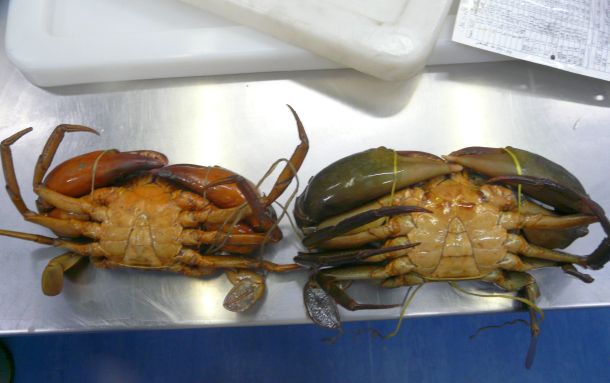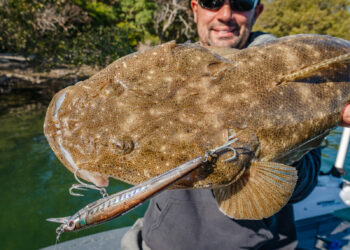SUMMER is the time for crabbing, and we do this because mud crabs are amongst the tastiest creatures in the ocean. They occur in mangrove estuaries throughout Australia’s tropical north from around Exmouth Gulf in Western Australia to as far south as the Bega River in New South Wales. At least four closely related species of mud crabs occur throughout the Indian and western Pacific region from Hawaii to as far west as South Africa.
Australia is home to two species, the giant mud crab Scylla serrata, which occurs up the east coast and as far west as the NT, and the orange mud crab (S. olivacea) which occurs in northern WA and across the top end as far east as the Gulf of Carpentaria. The orange mud crab can be easily identified by its orange/reddish colour, which contrasts the greenish brown of the giant mud crab.
All mangrove crabs have paddles on the rear pair of legs which identifies them as swimming crabs (Family Portunidae). The giant mud crab is the largest of the swimming crabs, growing to around 28cm shell width and nearly 3 kg. The orange mud crab is a little smaller, growing to around 18 cm shell width, and for both species male crabs generally grow larger than females, the latter which can be easily identified by their broad abdominal flap and smaller claws.
Muddies are active and aggressive crabs usually found in their greatest numbers in shallow brackish waters near mangrove swamps, favouring a soft muddy bottom. In estuaries their distribution is affected by salinity, with the crabs generally avoiding waters less than 10 ppt (1/3 strength of seawater). This places a limit to their upstream movements in large rivers and means they are often flushed to the mouths of estuaries after rainfall events.
All species of muddies are omnivorous scavengers. They are also cannibalistic, eating other crabs as well as their usual diet of barnacles, gastropods, bivalves and dead fish. Studies of giant mud crabs showed around 50 per cent of the material in their guts were molluscs, 20-22 per cent crustaceans, and the remaining 28-30 per cent consisting of plants (mangrove leaves being a favourite) and other debris.
Mud crabs are fast growing and short lived. Moulting is frequent and growth occurs immediately after they shed the old exoskeleton while the new shell is still soft. Both sexes mature at around 9 to 11 cm carapace width within the first year of life. While most of the life cycle of mud crabs is spent in estuaries, the berried females migrate offshore to spawn when water temperatures reach around 27-30°C.
Female crabs hold the fertilized eggs under their abdomen (between 2 and 5 million eggs at a time) only for around 2 weeks. During this time the eggs gradually change in colour from orange to black before hatching. The various larval stages occur in the plankton and are moved about by prevailing currents. The juvenile mud crablets eventually settle out onto the bottom after around 20 days, after which they begin to move into nearby estuaries to grow and repeat the life cycle.





















